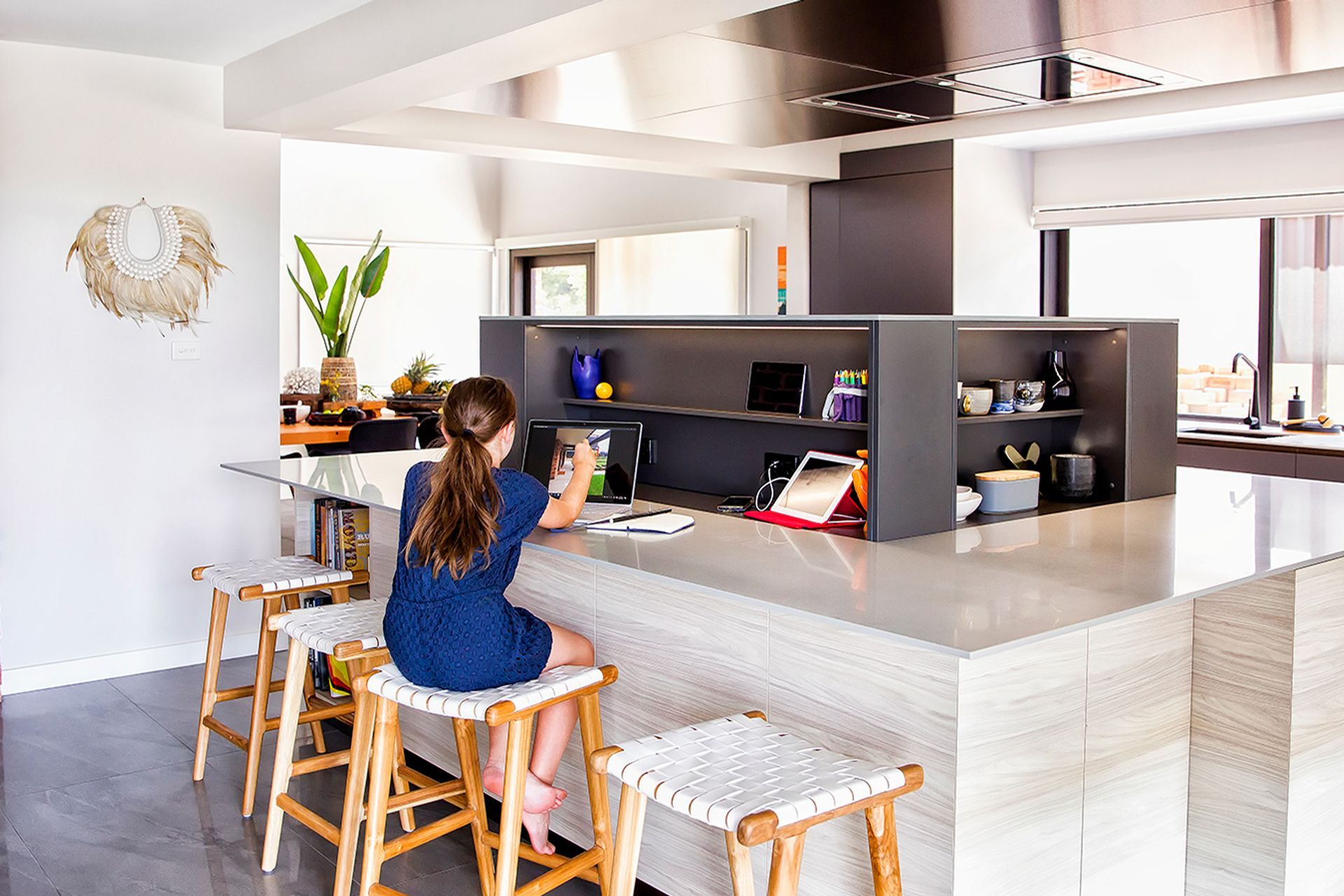11 Steps to a Successful Kitchen Design
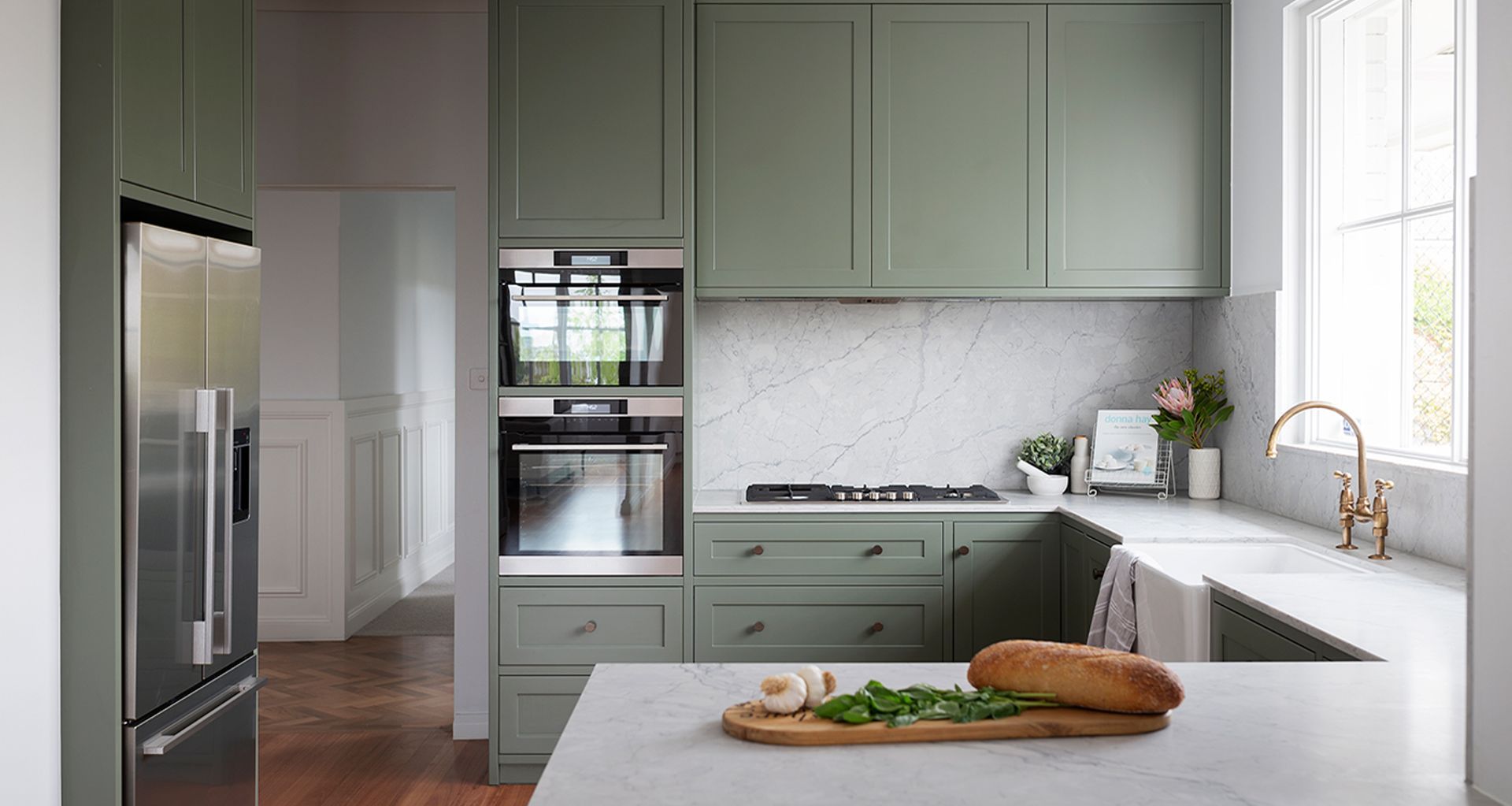

A guide to creating your heart of the home
The kitchen is considered by many to be the heart of the home. It’s where you refuel, share meals and conversation with loved ones. For such an important space, it makes perfect sense to plan your kitchen right from the start. Here are some practical pointers to help you along:
#1: Make a wishlist
Seen something you like? Take a picture, make notes. Shoot for the sky and don’t let perceived limitations hold you down. Take time to explore inspiration galleries, home design portals and design magazines to get a feel of not just what’s trending, but also what's new or soon to be available.
Consider what the must-haves and nice-to-haves are for your project. Put together an album of your favourite design elements on Pinterest or Instagram that you can easily share and update over time till you have a good idea of what you’re going for.
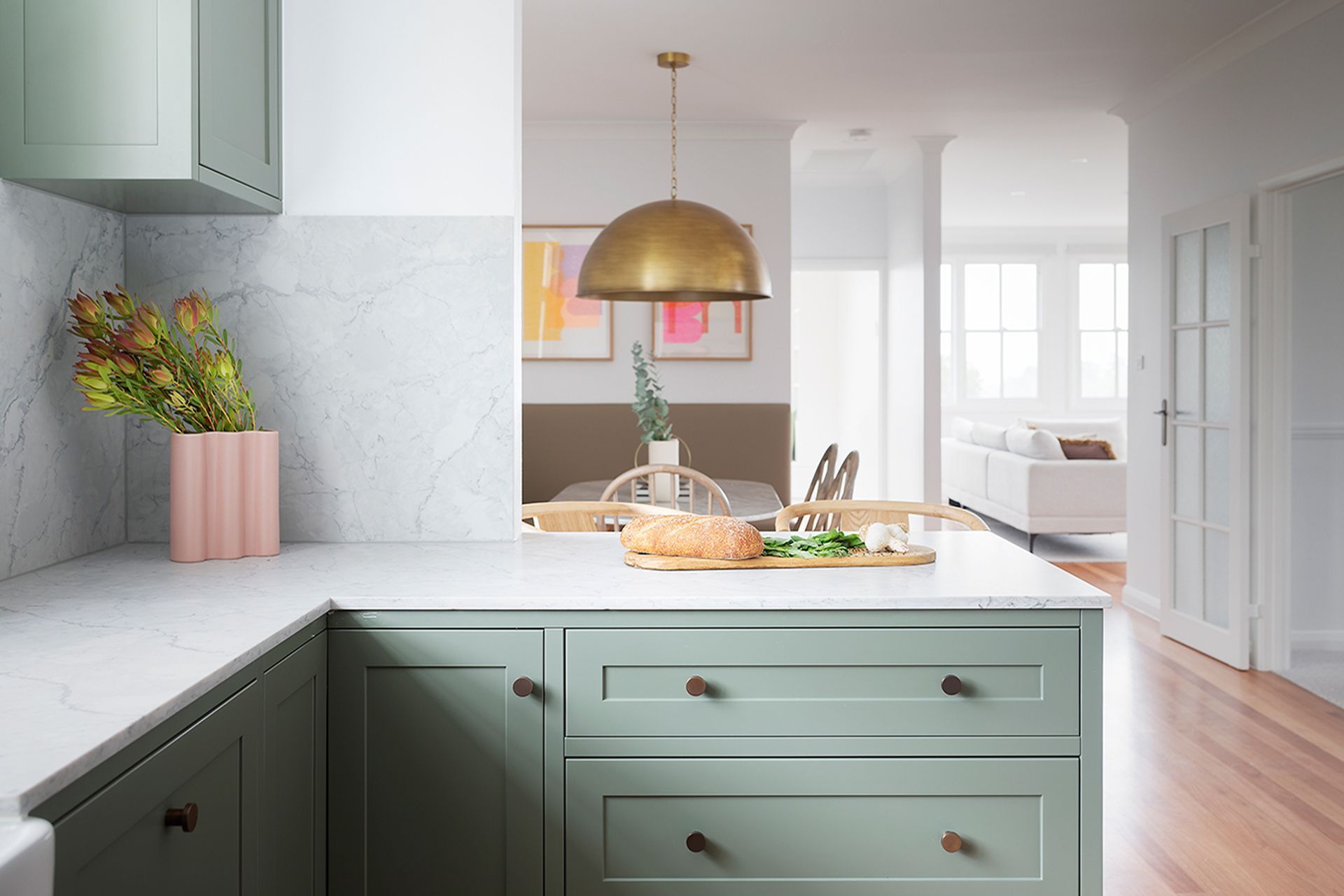
#2: Set a budget
Putting together a vision takes time, effort and money. You need to know how much you can realistically spend on your vision and ballpark costs for each of its components. Speak with friends and contacts who’d done similar. Get up to date on recent innovations, material costs and really get down to the brass tacks. Go beyond the obvious and dig beneath – consider line items like plumbing, gas, water, electricals, lighting and rangehood ducting to pin down planning requirements and a real cost for your kitchen.

If the total starts to make your eyes water – you’re probably on the right track. But fret not - refine your wishlist as you work along and focus on your priorities. Keep an eye out for specials during key sale seasons of the year and consider alternative methods to achieving the same result. You will be surprised by what you can get done if you really want something.
#3: Plan your layout
Consider the space and plan for an ergonomic layout that best suits your workflow triangle or intended usage. Got a vision for how you’d like the space to be enjoyed? Have in mind how you’d like everything to be placed and positioned for ease of access? Would you like to look out at your loved ones in the lounge or the pool as you cook? Would you like to converse and entertain as you cook? Is there space to eat around where you cook?

Fancy a cosy spot in the kitchen to also chill and work in? Is there space for a kitchen island? Can your family move around safely while cooking happens? Consider the ventilation requirements, lighting and storage opportunities you have with the flooring, ceiling and views in your space.
#4: Start with the rangehood
As the only kitchen appliance built for its placement and application, rangehoods now come in various sizes, designs, profiles, finishes and features to suit the requirements of increasingly sophisticated homeowners. They can now be installed anywhere in your kitchen space to vent unhealthy airborne grease, smoke, steam and odours outside of the home.

As you plan the layout, have a think about how best to run the ducting for optimal performance. How you want the kitchen to look will determine how best to run the ducting. Some innovative manufacturers offer solutions to run the ducting through cabinetry and bulkheads, wall and roof cavities to motors installed externally on the roof or wall – giving you unparalleled flexibility to design the kitchen of your dreams without compromising on form or function.
- If you seek clean design lines in your kitchen – look no further than sleek Undermount Rangehoods. These darlings of integrated kitchens fit flush into overhead cabinetry to extract cooking exhaust unseen.
- If a timeless showpiece is what you’re after to break up cabinetry and lead gazes upwards – Wallmount Rangehoods are your answer. These are mounted against the backwall and over your cooktop for what is traditionally the best air extraction performance.
- If preserving unblocked views across an open plan kitchen with high ceilings are your goal - the powerful and stately Ceiling Cassettes promises to bring out the wow factor in your design. Flush mounted into ceilings or bulkheads so you miss nothing as you cook.
- High ceiling bringing you down? No problem – Island Rangehoods are popular in kitchens with high ceilings but no bulkheads. They are designed as statement pieces to be suspended over cooktops on island and peninsula-type benchtops. Offboard rangehoods even enable conversation and entertainment to be enjoyed while cooking happens because all fan and motor noise are banished outside of the home where the motor is.
- Living large with an outdoor kitchen? Bring restaurant grade alfresco dining to your home with weather-resistant BBQ Alfresco Rangehoods designed to effectively deal with all that smoke and grease. These are available as both undermounts and wallmounts to fit your design.
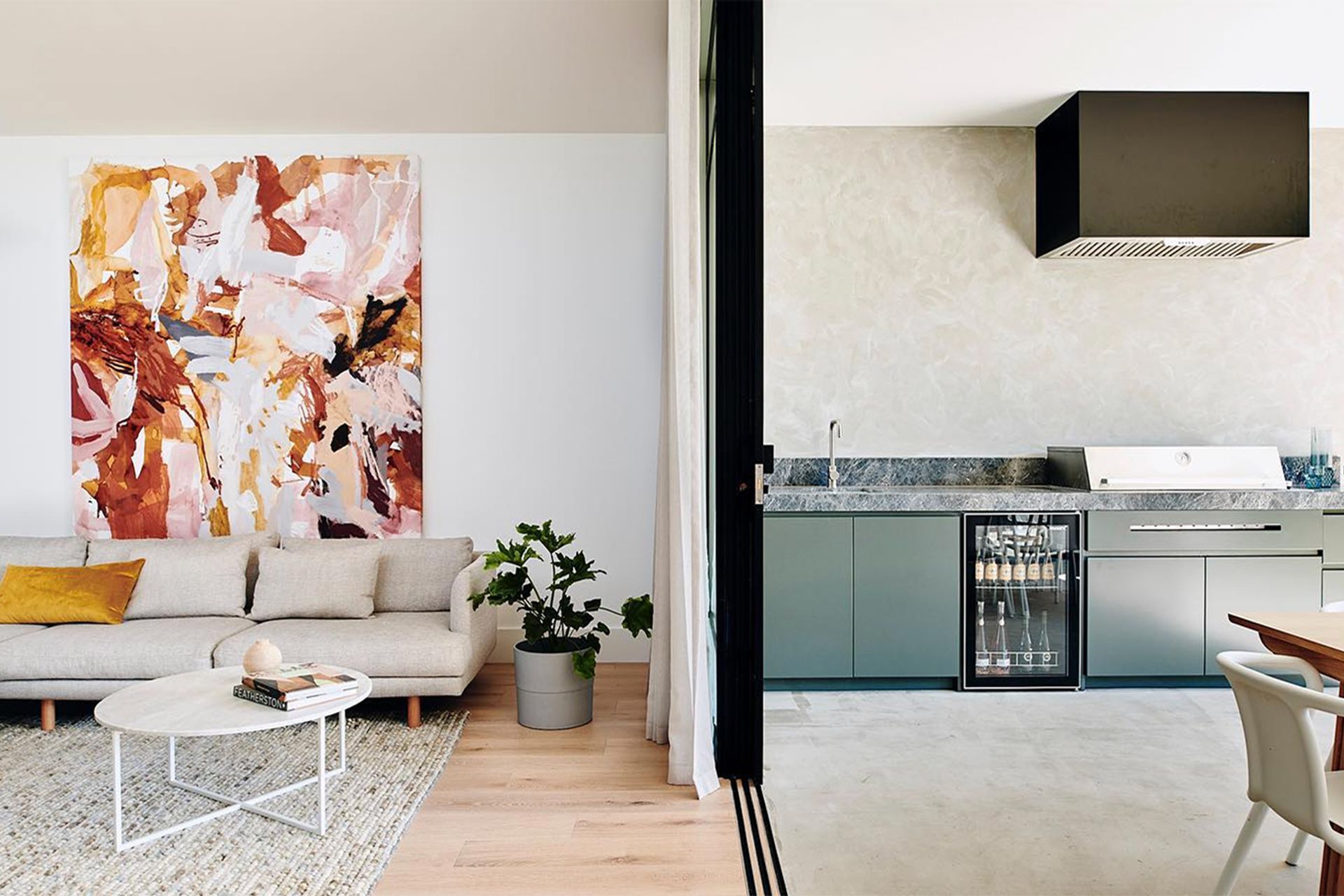
#5: Measure once, and then measure again
As the hub of the home, the kitchen invariably functions as a multi-purpose space for family dining, relaxing, working and entertainment. Ensuring you fit these usage scenarios into your work zone and workflows means keeping accurate measurements for how and where everything sits.
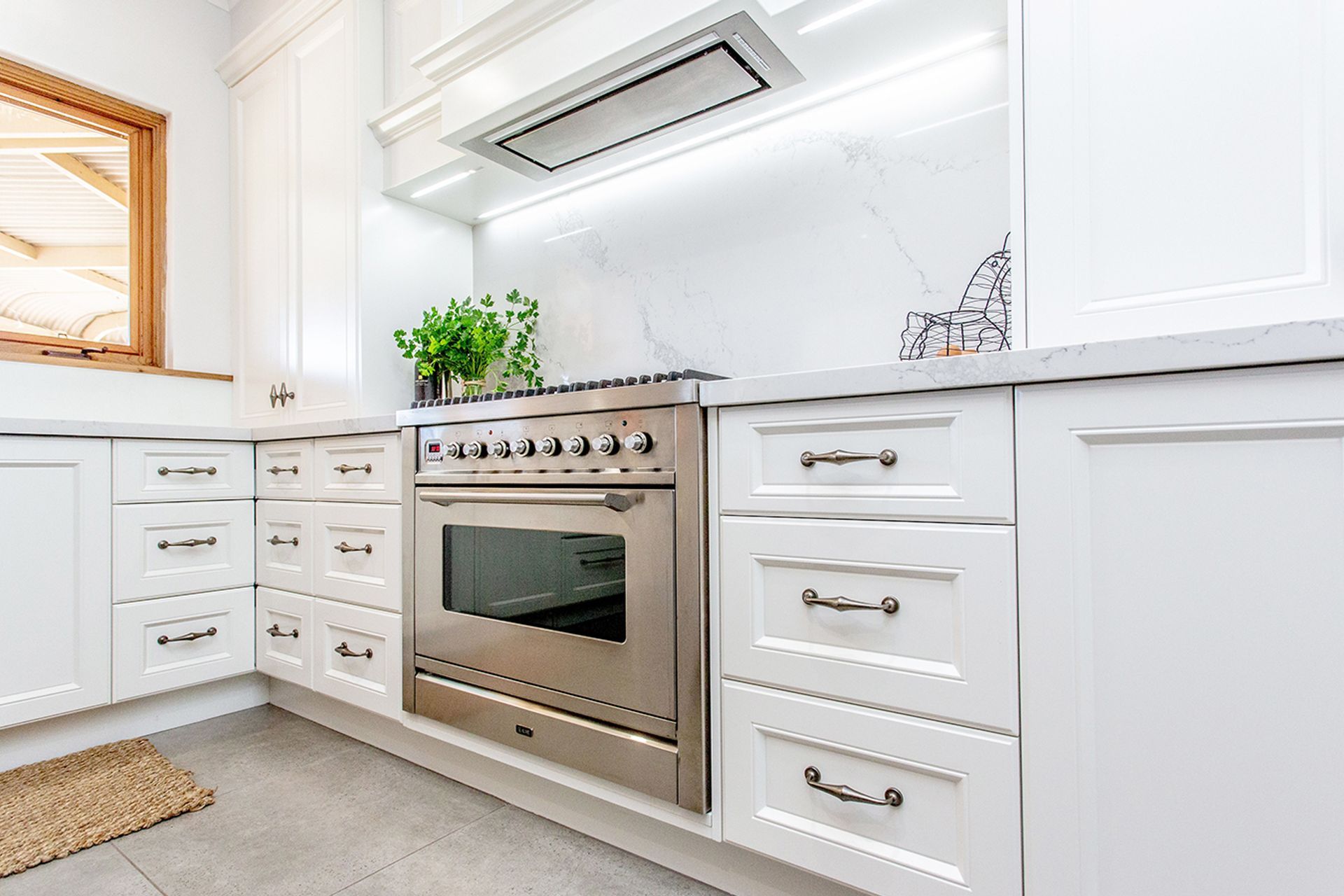
A design professional can help advise and ensure provisions for storage, display, fittings, power, plumbing, ducting, access, maintenance and safety so you maximise your space whilst keeping the integrity of your kitchen design.
#6: Make your cabinetry count
Planning your cabinetry size, height, depth and location determines what you can store where, and how easily everything can be retrieved. Start by considering what you want to store close to specific work zones, plus size and drawer systems available to make retrieval easy, even in dead corners and deeper spaces.

On top of providing organised storage, cabinets contribute a huge part to your kitchen aesthetic. Consider the look and feel you want for your kitchen, and how it relates to adjoining spaces like your dining area or lounge. Does your cabinetry style suit the joinery elsewhere in your home and the period of your property? Does it frame and enjoy symmetry with other key features like a cooker, chimney or rangehood to accentuate your design lines? Pining for a timeless, shaker-style kitchen? Insert panels and matte paint finishes are your friend.

Or are you going for a sleeker, more modern integrated look? If so, opting for flat-fronted cabinetry with a handle-less push-open design can contribute to a more free-flowing pared-down look. Too stark for you? Go moderate with a transitional design that combines traditional and contemporary elements to deliver clean lines and neutral colours. Materials, textures, surface finish, colour and fittings make all the difference whatever you choose.
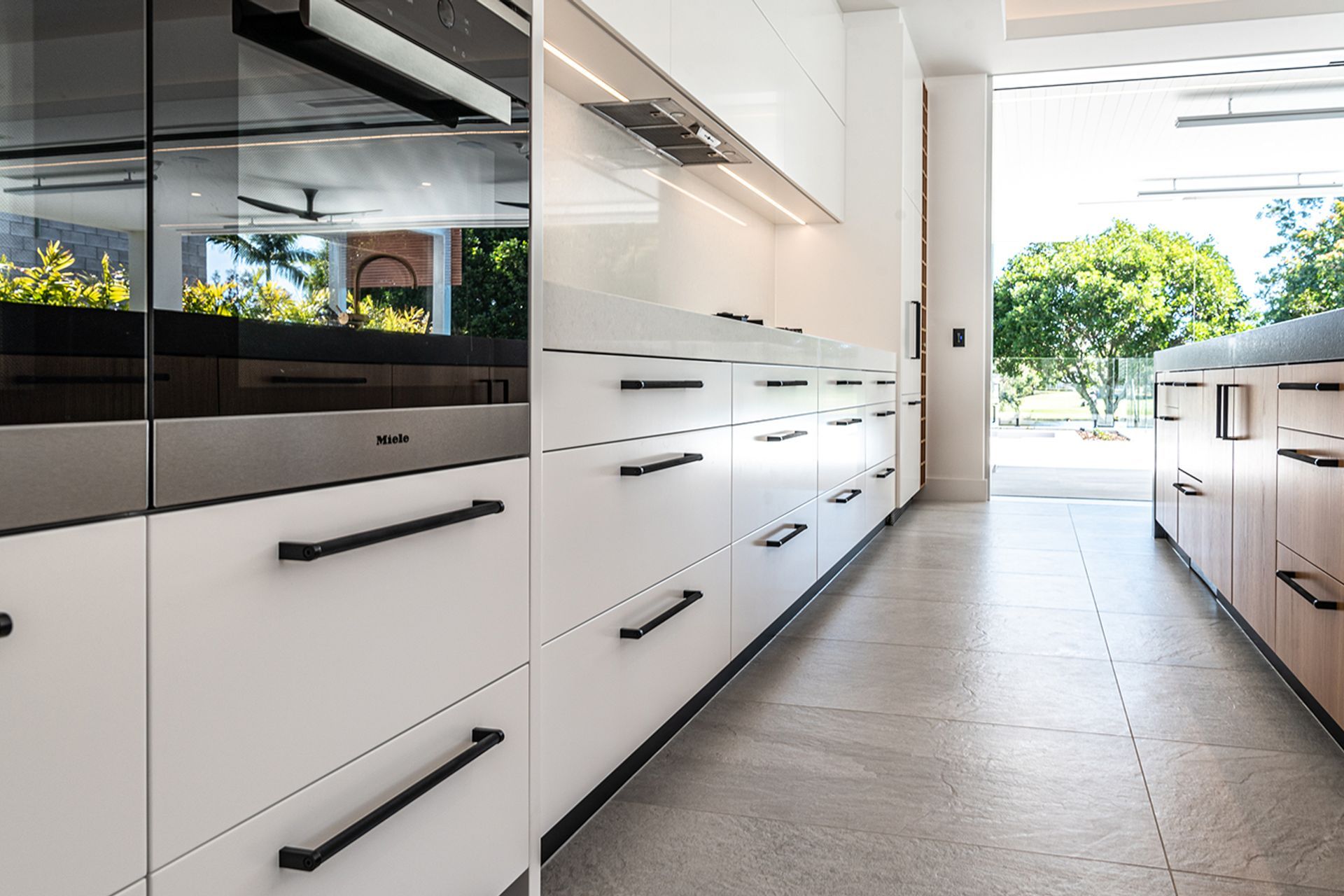
#7: Make space for countertop
Besides storage, if there’s another thing that’s always never enough of – its countertop space. Not just to plonk down the groceries you’ve just bought, but more importantly, space beside your sink and cooktop, to wash, prepare and cool food. And like cabinetry finishes and materials, your choice of countertop is key and contributes massively towards the overall kitchen aesthetic.
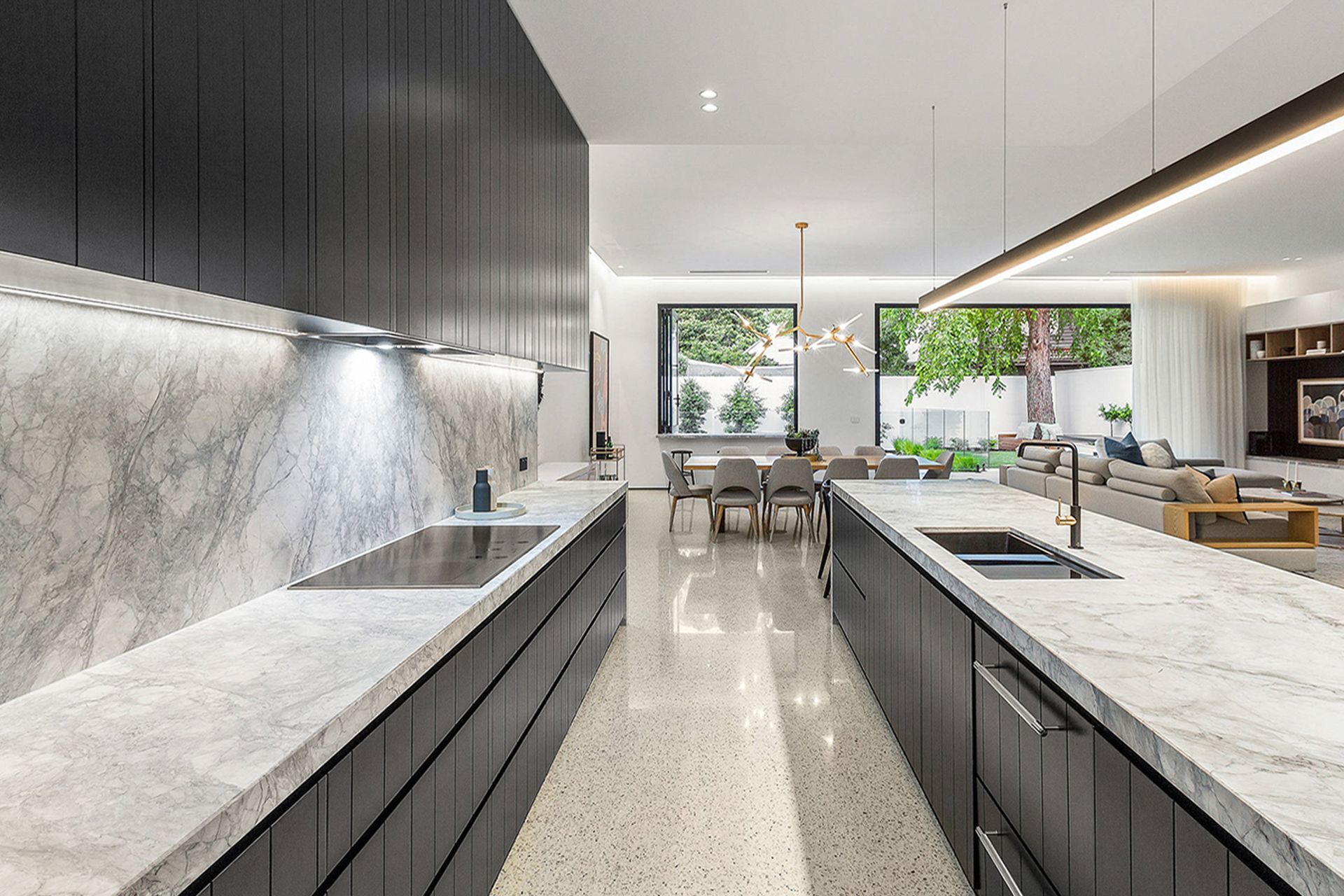
Popular choices include marble, quartz, porcelain, granite, timber and engineered solid surface made from resin and materials – each with their own pros and cons. Read up to see which works best for your kitchen style, lifestyle and where in doubt – spoil for the one that captures your heart.
#8: Colour your world
Kitchens reflect your personality and planning a colour scheme for it lets you express yourself. Traditionally, the most popular colour choices are white, cream, off-white and pale grey – perfect as a backdrop for your own splashes of colour whilst retaining a classic look that won’t date and is easy to redecorate around in future.

If you are tired of playing it safe with neutral palettes, try mirroring the hues used in other parts of your home. Or punch it up with vibrant pops of bright and bold colours. The classic décor rule in creating a colour palette for a space is 60-30-10: 60%dominant colour, 30% secondary colour and 10% accent colour.

Other styles can be brought to life with popular colour schemes like warm earth tones, vibrant statement walls, calming greys, natural greens, pastel hues, cool shades and contrasting tones.

A contemporary look can also be easily achieved with the wealth of stainless steel, chrome, white and glassed appliances available – paired with a classy black or white colour scheme and accented with your preferred wood. Have fun and never let it be said that you have a samey-looking kitchen again!
#9: Lighting matters
Good lighting makes all the difference to the success of a design. Set the table and mood with flexible lighting to suit whatever it is you’re doing in your kitchen space. For example, an island kitchen is a great place to install statement piece lighting that can also serve as task lighting.

Like rangehood ducting, kitchen lighting planning should be done in advance during the initial stages of a new kitchen design. Left as an afterthought - lighting possibilities become limited, impact is lessened and mistakes can be costly and disruptive to rectify.
Start by drawing up a grid of downlights to ensure an even spread of light. Then adjust for potential blockages from bulkheads, joists, skylights and other sources of illumination. Ceiling spotlights can be supplemented with wall lights. Task lighting should illuminate work surfaces, sink and cooktop. Remember that most leading rangehoods now come with integrated lighting.
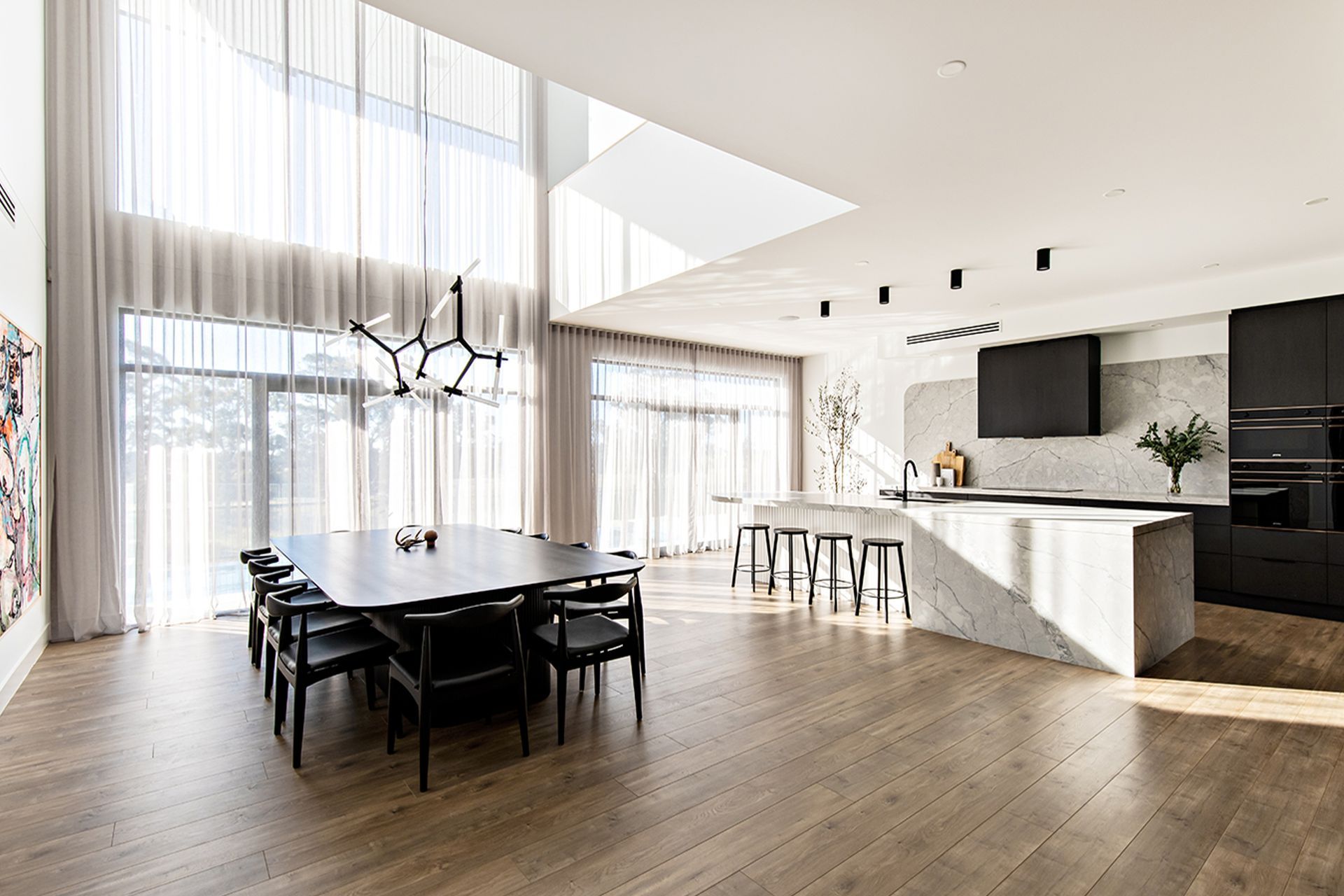
Accent lighting may be incorporated over the dining table and LED strips beneath units can make cabinetry seem like they float. Look into solutions like in- and under- cabinetry lighting, individual lighting circuits and configurable lighting with smart controls for ease of use. Don’t be afraid to mix feature lights, colours and materials for a setting to call your own.
#10: Leave them floored
Kitchen floors need to be safe, hard-wearing and easily maintained. That doesn’t mean their looks don’t matter. The footprint alone (pun intended) easily ties your kitchen design together and your choice of material reflects your attitude towards style and function.
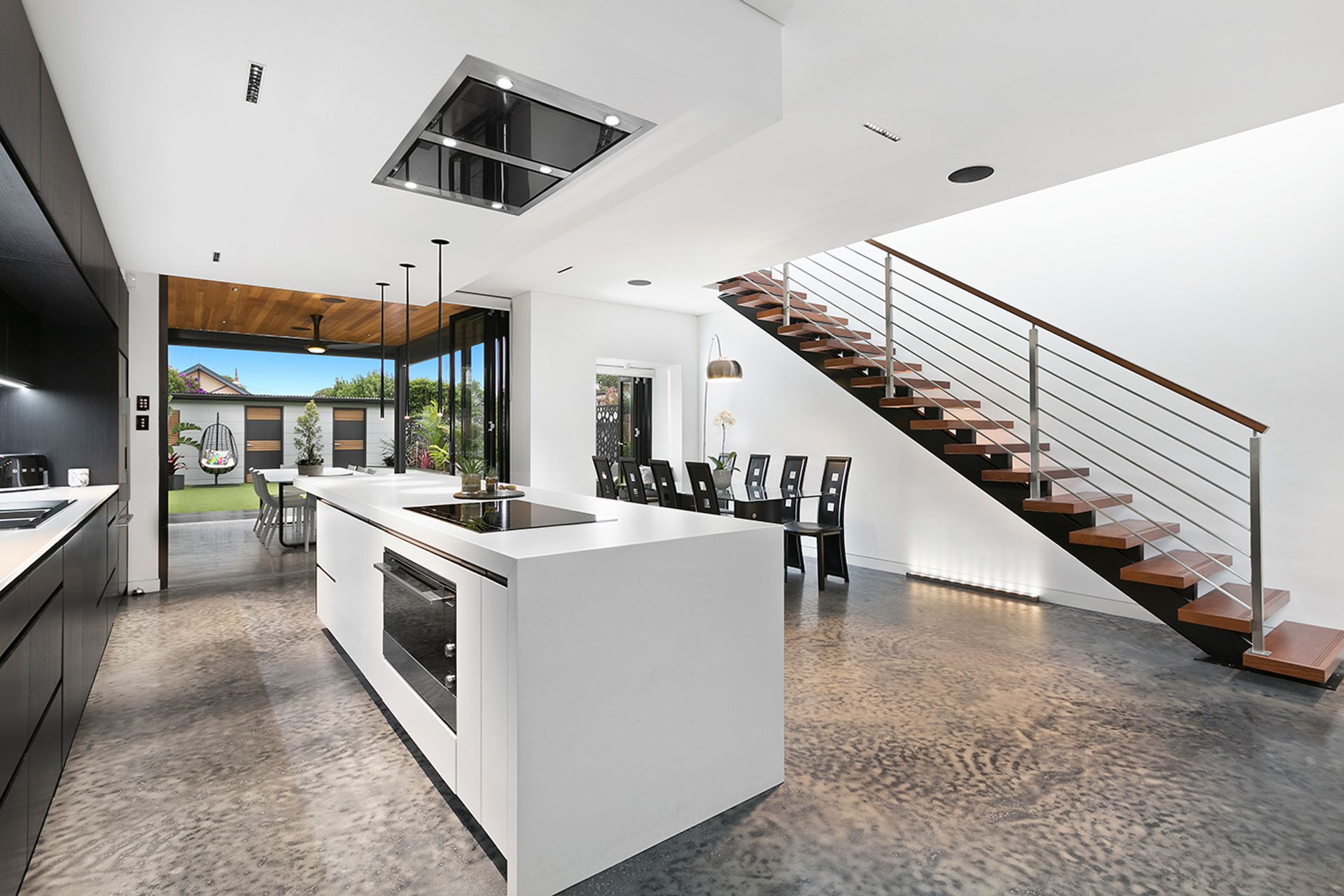
Popular options include tiles, timber, concrete, laminate, rubber and vinyl – each with their own pros and cons. All of them can be used with underfloor heating but check with your supplier before purchase. Do your research and you’re guaranteed to floor visitors with your informed choice.
#11: Eliminate noise
Noise has become a major bugbear, especially in increasingly sealed and shared spaces repurposed for work and study at home. Create healthier and more conducive spaces for interaction with practical design considerations like the use of:
· False ceilings & bulkheads: Reduce the volume of space that needs to be heated or cooled, break up voids and reduce echoes with sound absorption materials like acoustic panels;
· Soft-closing cabinetry, doors & windows: Discover the bliss of cushioned hinges and soft close systems to preserve the peace;
· Integrated whitegoods: Install appliances that are designed to be installed directly into cabinetry, under a work surface or concealed behind a hinged door panel to enjoy noise insulation and maintain clean design lines in your kitchen; and
· Silent rangehoods: Developed with external motors that are uniquely mounted outside of the home to take all cooking steam, smoke, odours, airborne grease and motor noise out of the kitchen and into the ambient atmosphere.
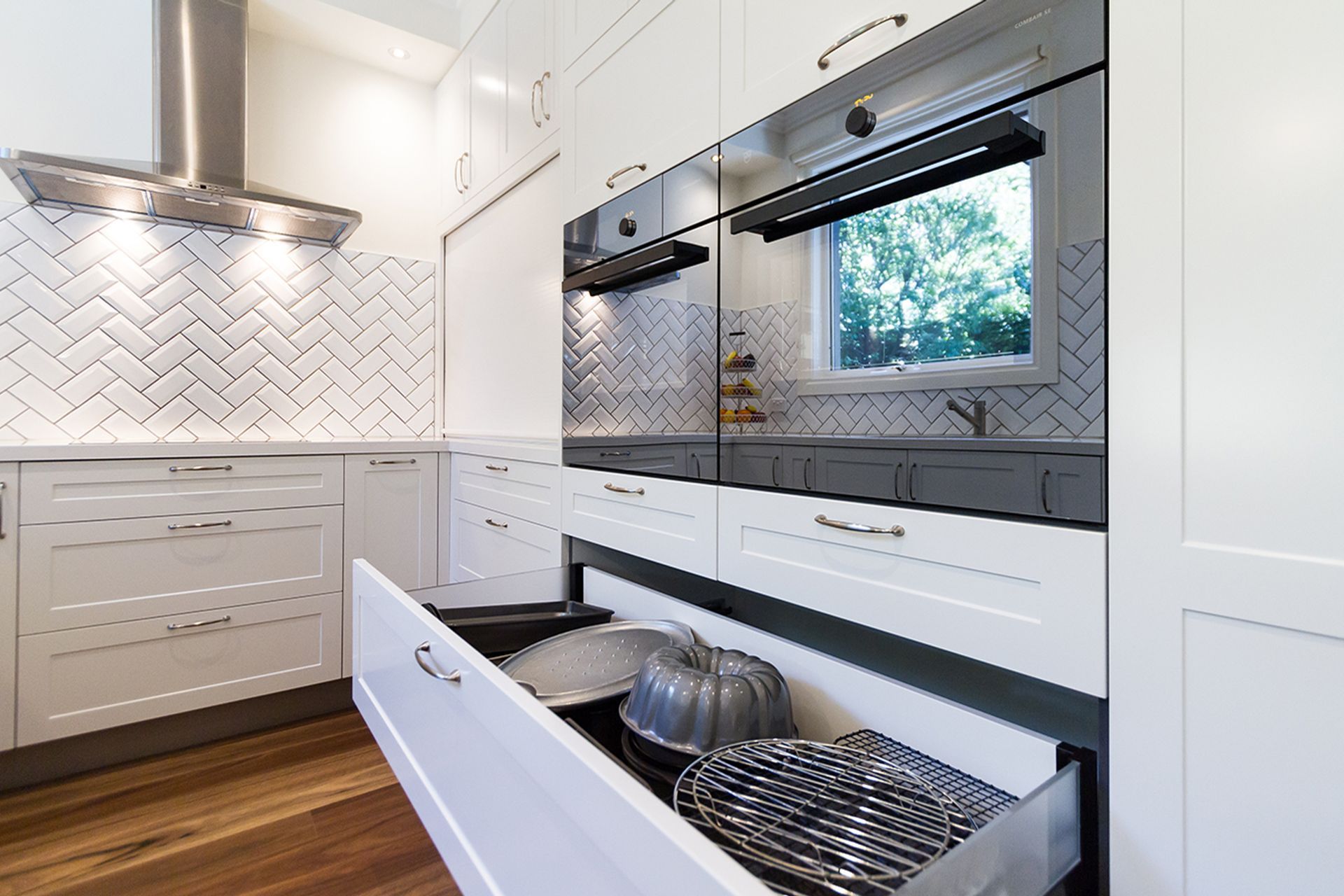
What next?
Visit the Schweigen Inspiration Gallery to browse stunning award-winning kitchens across Australia and New Zealand. Then contact us at 1300 881 693 / sales@schweigen.com.au to start putting together the kitchen of your dreams today.
